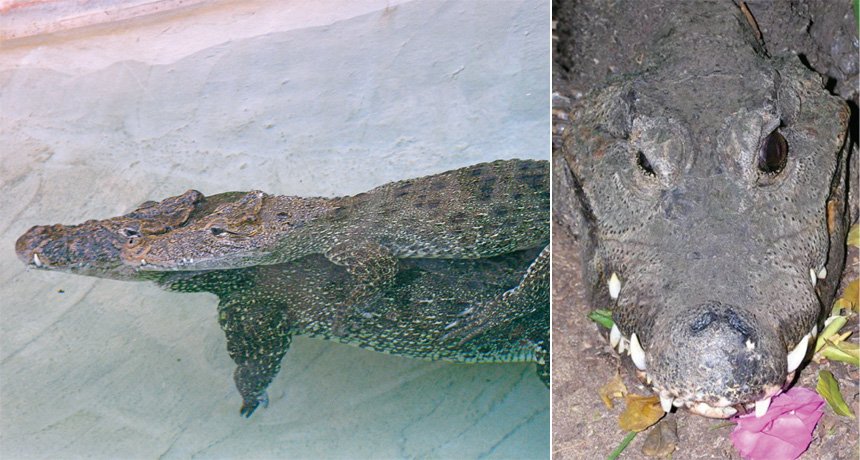Piggyback rides and other crocodile fun
Ambush predators show their playful side

JUST FOR FUN A male Cuban crocodile in a zoo gives his longtime female companion a piggyback ride (left), and a West African dwarf crocodile fiddles with a blossom for seemingly no good reason (right).
Left: V. Dinets; Right: V. Dinets/Animal Behavior and Cognition 2015.






